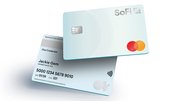Article
Polymer banknotes: On one side
There are some things for ATM operators to like about polymer banknotes, such as durability and anti-counterfeit security.

January 29, 2014
Within the ATM industry, polymer banknotes have long been the subject of controversy and concern — starting with the huge cost of retrofitting an entire cash-handling system to accept them.
The Bank of England recently announced that it will change its banknotes from paper to plastic. This prompted us to take a look at the pros and cons of polymer from the point of view of two British payments professionals who will soon be making way for the new money.
Following is a commentary that discusses the benefits to the public of the change to polymer notes — including cost savings; in an open letter to the Bank of England, a second commentator points out that these savings will likely come at a very high cost to cash-handling businesses in the private sector.
by Mervin Amos
CTO, Alaric Systems Ltd.
Over the years we've seen an evolution in the way we pay — with less dependence on cash and checks, and increases in electronic forms of payment. Some people have been so bold as to say cash is on the way out.
But talk around the creation of a cashless society has always been misleading. Cash is not on the way out — it's actually holding firm in absolute terms as the use of cards and other electronic payment methods rises. Cash's slice of the pie is the same as ever; it's just that the pie as a whole is a lot bigger than it used to be.
And if the latest developments in banknote technology are anything to go by, there is a very bright future for cash.
The U.K. is the latest country — and the largest economically so far — to announce plans to introduce plastic banknotes. Polymer versions of the 5 pound and 10 pound notes will enter circulation in 2016, after the Bank of England's consultation revealed widespread support among consumers for the advancement.
Plastic notes, as we have mentioned before, come with a number of advantages. They are said to last two-and-a-half times longer than their paper predecessors, which reduces the overall the cost of cash — estimated by a Tufts University study at $200 billion a year in the U.S.
 Indeed, simply by reducing the burden of maintaining cash in circulation, polymer notes mean cash will remain in favor.
Indeed, simply by reducing the burden of maintaining cash in circulation, polymer notes mean cash will remain in favor.
But the technology also reduces counterfeiting, a crime that has long been viewed as something so costly that it could jeopardies the long-term future of cash. In Canada, which is just about ready to go polymer-only, counterfeiting hit a peak from 2001 to 2004. Blame was placed on the 10 dollar and 5 dollar bills printed in 2001 and 2002, which were seen to have too few security features.
According to Mark Carney, governor of the Bank of England, "Polymer notes are the next step in the evolution of banknote design to meet that objective. The quality of polymer notes is higher, they are more secure from counterfeiting, and they can be produced at lower cost to the taxpayer and the environment."
The U.K. is not the first country to move on polymer banknotes. Australia was the first to issue purely plastic notes, with countries including New Zealand, Mexico, Singapore, Fiji and Canada following suit.
In fact, what's more interesting is why so few countries have adopted the notes. One reason is that the security gap between paper and plastic notes is closing. For example, it is now possible to make hybrid notes, which are paper notes with a transparent polymer window.
In October, the U.S. Federal Reserve began supplying financial institutions with a redesigned $100 note that incorporates new security features to deter counterfeiters. The note includes two new security features: a blue 3D security ribbon with images of bells and 100s, and a color-changing bell in an inkwell. The new features, along with additional features retained from the previous design, such as a watermark, make the banknote virtually impossible to replicate.
Anything that makes cash harder to counterfeit has to be a good thing, whether that's pure polymer notes or more security measures added to paper and hybrid notes. Maintaining a healthy mix of payment methods is important for the economy and by reducing the overall cost of cash, we can be certain that old-fashioned banknotes are here to stay.
Bhaskar Chakravorti, executive director of the Institute for Business in a Global Context at Tufts, and co-author of the "Cost of Cash in the United States" report, sums it up. "Obviously, cash is never going to go away — it's an important part of the economy. But we need to recognize the costs."
Polymer notes will reduce costs and limit counterfeiting, which can only be a good thing for all concerned. After the U.K., perhaps more of the world's largest economies will follow suit.
Read more about cash management.













